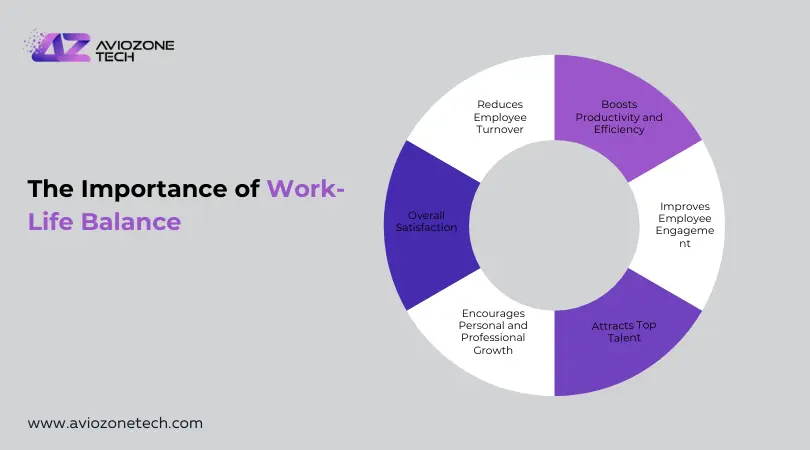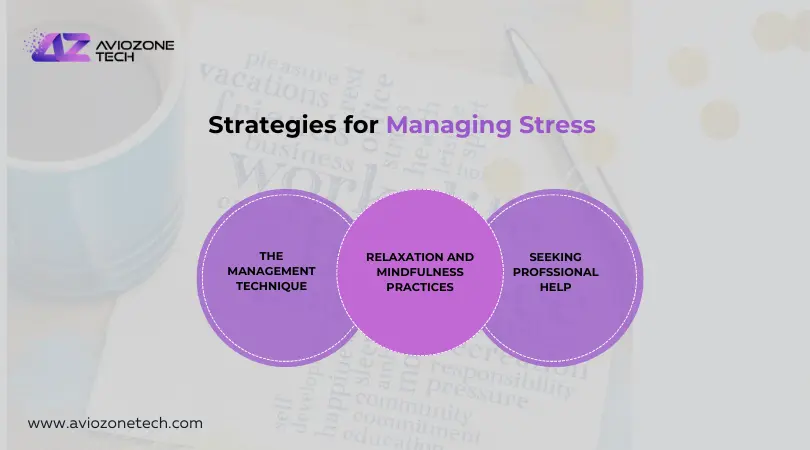Mastering Stress and Work-Life Balance in the Workplace
In the current fast-paced environment, managing stress and maintaining a healthy work-life balance have become critical for both personal well-being and professional productivity. The pressure to perform, meet deadlines and juggle multiple responsibilities can take a toll on employees, leading to increased stress levels and burnout. This article explores the dynamics of stress and work-life balance in the workplace, offering practical strategies for individuals and employers to create a more balanced and less stressful work environment.
Understanding Workplace Stress
Workplace stress is a physical and emotional response that occurs when the demands of the job exceed an individuals capacity to cope. This type of stress can stem from various factors, including excessive workloads, tight deadlines and challenging relationships with colleagues or supervisors.
Common Causes of Workplace Stress
- High Workload: Overwhelming tasks and tight schedules.
- Lack of Control: Limited autonomy over job-related decisions.
- Inadequate Support: Insufficient resources or support from management.
- Job Insecurity: Fear of job loss or instability.
- Work-Life Imbalance: Inability to balance professional and personal life.
Impact of Stress on Employees
Physical Health Consequences
Chronic stress can lead to various physical health issues such as headaches, high blood pressure and heart disease. Prolonged exposure to stress hormones like cortisol can weaken the immune system, making individuals more susceptible to illnesses.
Mental Health Effects
Stress significantly impacts mental health, contributing to conditions such as anxiety, depression and burnout. Persistent stress can affect cognitive functions, leading to difficulties in concentration, decision-making and memory retention.
Decreased Productivity
Stress reduces productivity and efficiency in the workplace. Stressed employees may struggle to focus, leading to mistakes and a decline in work quality. This not only affects the individuals performance but can also impact overall organizational outcomes.
Recognizing Signs of Stress
Physical Symptoms
Common physical symptoms of stress include:
- Fatigue
- Muscle tension
- Stomach problems
- Frequent colds and infections
Emotional and Behavioral Signs
Emotionally, stress can manifest as irritability, anxiety or depression. Behaviorally, it might result in absenteeism, reduced work performance and strained relationships with colleagues.
The Importance of Work-Life Balance

A proper work-life balance significantly contributes to the overall well-being of employees. When individuals can effectively manage their work and personal lives, they experience lower stress levels, reduced burnout, and better mental health. This holistic approach to well-being fosters a more positive and motivated workforce, which directly impacts productivity and job satisfaction.
Boosts Productivity and Efficiency
Contrary to the misconception that longer hours equate to higher productivity, a balanced work-life scenario often leads to more efficient and focused employees. When employees are well-rested and have adequate time to recharge, they bring more energy and creativity to their work. This leads to improved performance and productivity, as employees can concentrate better and accomplish tasks more effectively.
Reduces Employee Turnover
High levels of stress and an imbalance between work and personal life are significant factors contributing to employee turnover. By fostering a culture that values work-life balance, organizations can enhance employee loyalty and retention. Employees are more likely to stay with a company that respects their personal time and provides flexibility, reducing recruitment and training costs associated with high turnover rates.
Improves Employee Engagement
Employees who experience a good work-life balance are generally more engaged and committed to their work. They feel valued and appreciated, which translates into a higher level of dedication and a stronger connection to the company’s goals and values. Engaged employees are not only more productive but also act as ambassadors for the organization, enhancing its reputation and attractiveness as an employer.
Attracts Top Talent
In the competitive job market, work-life balance is a key factor that potential employees consider when choosing an employer. Companies that prioritize and promote work-life balance can attract top talent who seek more than just a paycheck. This can be a critical differentiator, especially among younger generations who place a high value on their quality of life.
Encourages Personal and Professional Growth
Work-life balance allows employees to pursue interests and activities outside of work, leading to personal development and growth. This, in turn, can benefit the organization as employees bring diverse perspectives and skills gained from their personal experiences. Additionally, employees who have time to focus on their personal growth often exhibit greater creativity and innovation in their professional roles.
Strategies for Managing Stress

Time Management Techniques
Effective time management is crucial for reducing stress. Prioritizing tasks, setting realistic deadlines and using tools like calendars and to-do lists can help manage workload efficiently.
Relaxation and Mindfulness Practices
Incorporating relaxation techniques such as deep breathing, meditation and mindfulness can help mitigate stress. These practices promote a sense of calm and can improve focus and emotional resilience.
Seeking Professional Help
If stress becomes overwhelming, seeking professional help from a counselor or therapist can provide support and strategies to cope effectively. Employee Assistance Programs (EAPs) often offer resources for professional counseling.
Employers Role in Reducing Workplace Stress
Creating a Supportive Environment
Employers play a crucial role in mitigating workplace stress. Creating a supportive environment where employees feel valued and heard can significantly reduce stress levels.
Offering Flexible Work Arrangements
Flexible work arrangements, such as telecommuting, flexible hours, or compressed workweeks, can help employees balance their professional and personal lives more effectively.
Providing Employee Assistance Programs (EAPs)
EAPs provide confidential support for employees dealing with personal or work-related issues. These programs can offer counseling, stress management resources and referral services.
Promoting Work-Life Balance
Encouraging Breaks and Vacations
Regular breaks and vacations are essential for maintaining work-life balance. Encouraging employees to take time off can prevent burnout and promote overall well-being.
Implementing Remote Work Options
Remote work options can provide flexibility, allowing employees to manage their work and personal responsibilities more effectively. This can lead to increased job satisfaction and productivity.
Setting Realistic Expectations
Setting realistic expectations regarding workload and deadlines can prevent employees from feeling overwhelmed. Clear communication and achievable goals are key to reducing stress.
Personal Strategies for Work-Life Balance
Prioritizing Tasks
Prioritizing tasks helps in managing time effectively. Focusing on high-priority tasks first can reduce stress and improve productivity.
Setting Boundaries
Setting boundaries between work and personal life is essential. This can involve creating a dedicated workspace, setting specific work hours and ensuring that work does not intrude on personal time.
Maintaining Healthy Relationships
Healthy relationships with family, friends and colleagues provide a support system that can help manage stress. Regular social interactions can enhance emotional well-being.
Workplace Culture and Its Impact
The Role of Organizational Culture in Stress
A positive organizational culture can significantly reduce stress levels. Cultures that promote respect, collaboration and recognition contribute to a more supportive work environment.
Building a Positive Workplace Culture
Building a positive workplace culture involves promoting open communication, recognizing employee achievements and fostering a sense of community. This can lead to higher employee morale and reduced stress.
Technological Tools to Aid Work-Life Balance
Productivity Apps
Productivity apps like Trello, Asana and Todoist help manage tasks and deadlines efficiently, reducing stress associated with disorganization.
Communication Tools
Communication tools like Slack and Microsoft Teams facilitate efficient collaboration and communication, making remote work and project management easier.
Wellness Apps
Wellness apps such as Headspace and Calm offer guided meditation and relaxation exercises that can help manage stress and promote mental well-being.
Balancing Remote Work and Personal Life
Challenges of Remote Work
Remote work can blur the lines between professional and personal life, leading to overwork and stress. Distractions at home and the lack of a structured work environment can also pose challenges.
Strategies to Maintain Balance
Establishing a routine, creating a dedicated workspace, and setting clear boundaries between work and personal time can help maintain a balance while working remotely.
Future Trends in Workplace Stress
Management and Work-Life Balance
Emerging Trends
Emerging trends in workplace stress management include the increased use of AI for task automation, the growth of remote work and the focus on mental health resources.
The Future of Work-Life Balance
The future of work-life balance lies in creating adaptable work environments that prioritize employee well-being. Companies are likely to continue adopting flexible work policies and investing in technologies that support work-life balance.
Conclusion
Managing stress and maintaining a work-life balance is essential for a healthy and productive workplace. By recognizing the signs of stress, implementing effective strategies and fostering a supportive work culture, both employees and employers can contribute to a more balanced and less stressful work environment.
FAQs
How Can I Tell if I Am Experiencing Work-Related Stress?
Signs of work-related stress include physical symptoms like headaches and fatigue, emotional symptoms such as anxiety or irritability, and behavioral changes like reduced performance and absenteeism.
What Are Some Quick Stress-Relief Techniques I Can Use at Work?
Quick stress-relief techniques include deep breathing exercises, taking short walks, practicing mindfulness, and using stress-relief apps.
How Can Employers Help Improve Work-Life Balance for Their Employees?
Employers can offer flexible work arrangements, encourage breaks and vacations, provide Employee Assistance Programs (EAPs), and create a supportive work environment.
Are There Any Tools That Can Help Me Manage My Work-Life Balance?
Yes, tools like productivity apps (Trello, Asana), communication tools (Slack, Microsoft Teams), and wellness apps (Headspace, Calm) can help manage work-life balance.
What Should I Do if I Feel Overwhelmed by Work Stress?
If you feel overwhelmed by work stress, consider seeking professional help from a counselor or therapist, practicing relaxation techniques, and discussing your concerns with your employer.







